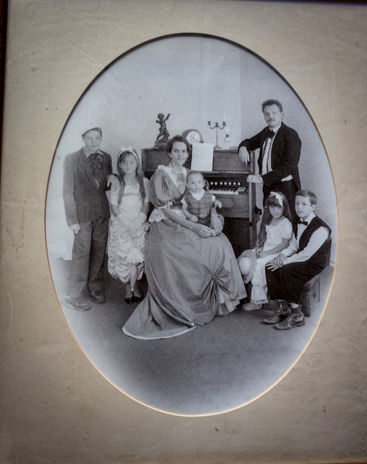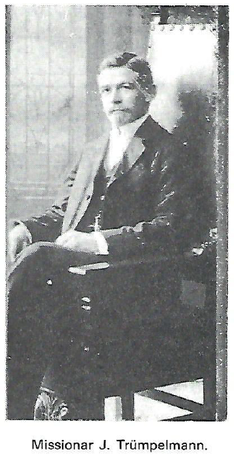
Your guide to Heidelberg Gauteng

#Lutheran Church
Heritage Blue Plaque #Nr 29
LUTHERAN CHURCH - 26 Spruyt Street
What is the story here?
After the town of Heidelberg was proclaimed in 1866 a request was made to the Berlin Mission in Pretoria for them to establish a Mission in Heidelberg. Missionary During was sent to Heidelberg and the mission station was officially founded on the 25th of September 1875.
Hermann Albin During, (01.03.1841- 05.09.1922)
Hermann came to South Africa in 1869 as a missionary and worked in Lydenburg and Botshabelo until 1875, when he came to Heidelberg. When coming to Heidelberg he couldn’t find accommodation and him and his family had to stay in a ox-wagon, until the Mayor of Heidelberg, Mr. Marais, gave them a small dwelling to stay in. Hermann bought a piece of ground for the Berlin Missionary Society where he built a dwelling and started training and doing church services for the black servants of Heidelberg. The property went all the way to the Blesbok River. Only after a few weeks of his arrival had he already baptized 22 people and 20 children were attending his school.
In 1877, Hermann started building the church building. He was a qualified carpenter and did all the woodwork in the church himself – the pulpit, baptism bowl and church benches. With the inauguration of the church on the 10th of February 1878, there were 200 people attending church regularly and in 1879, 63 children were visiting the school daily.
The inhabitants of Heidelberg objected to the mission work, complaining about the influx of natives. Herman then bought the farm Rietspruit in 1881, about 20 kilometres from Heidelberg, where he established a new mission station, which he named Woyenthin, after the farm of the Holtz family, in Germany, that donated the money for Rietspruit. In 1884 Hermann moved to Woyenthin. In 1892 he built a church there. That church is still standing, but in ruins.
The mission station had a great setback when the English troops razed it, during the second Anglo-Boer War. Half of his house was burnt and the church burnt down. Hermann was captured under the charge that he had made inflammatory speeches against the British and gave the Boers food. He spent a number of days in prison in Pretoria and his family was placed under house arrest in Heidelberg. His son Carl, who fought for the Boers, also died during the war and is buried at Woyenthin.
When Hermann retired he moved to Heidelberg, where he died in 1922. He is buried in the Kloof Cemetery some distance from his first wife Loiuse Amalia Bertha nee Salomon (1838-1904) and his second wife Anna Selma nee Leuschner (1872-1950).
In 1887, Missionary Johannes Walter, from Botshabelo, took over the church in Heidelberg.
In 1897, Missionary Walter was sent to Ermelo to set up a Mission and Missionary Herman Muller took his place. In 1899 the German Congregation consisted of 11 families, when the 2nd Anglo-Boer War started.
Missionary Muller was asked to preach to the German speaking Boers on the field and on coming back to Heidelberg, he could not come to his church as the British had taken over Heidelberg. He was exiled to Germany and returned in 1904. Muller was promoted to Missionary Superintendant of the Orange Free State in 1921.
Missionary Johannes Baumbach from Bethanien in the Free State took over the church and was transferred to Pretoria in 1934. Missionary Johannes Trumpelman from Wallmannsthal then took over.
(I met a descendant of his who is still a member of this church)
In 1937 a church was built in the Location known as “Ou Skom”, which was in the area west of the road between Rensberg and Heidelberg. All the movable furniture was moved. (Alter, christening font and pews) These must have been the furniture made by Missionary During. I
n 1958 the natives were re-located to the new township known as “Ratanda” and all the buildings in “Ou Skom” were demolished. (I have been to the Lutheran Church in Ratanda and there is none of the old furniture there). In 1937 the Spruyt Street Mission Station was transferred to the Heidelberg Town Council, with authorisation of the continued use by the German Congregation.
The missionary house and other buildings, except the church were demolished prior to 1948.
On the 22nd of June 1948, the church on Section 6 of stand 234, Spruyt Street, Heidelberg, was transferred to the German Lutheran Church. In 1949 Johannes Trumpelman retired.
Missionary Renning Hagens takes over in 1950. Based at Woyenthin he holds 14 G
German services per year at the Spruyt Street Church until 1951, when he is transferred to Duiwelskloof.
In 1951 Missionary Herbert Bahr moves into Woyenthin and provides regular services at Spruyt Street Church. (First Sunday of each month) In 1958 the church is renovated internally.
In 1963 Missionary Bahr receives a calling to Johannesburg, which ends the role of missionaries in this area. Black ministers now provide services to their own communities. (Source: Berlin Missionaries in South Africa and Their Descendant by Linda Zollner BA HOD/ JA Heese DEd and Lutherische Kirche 100 Jahre 1878-1978 by Pastor Gerhard Eberle.
Note by Tony
When unveiling the Blue Plaque on the 21st November 2021, I attended their church service at 15h00 in the afternoon. The service was in German with parts in English to accommodate me. Hymns were in German except for the one English hymn. What was special that we sang to the sounds of a Pedal Organ which must be at least 100 years old and works perfectly.
We took communion where we had a choice of taking either wine or grape juice. There were only about 20 people in the congregation. I found the Germans to be very friendly and I enjoyed the service. Due to numbers they now form part of two other churches and rotate their services in the different churches.
















